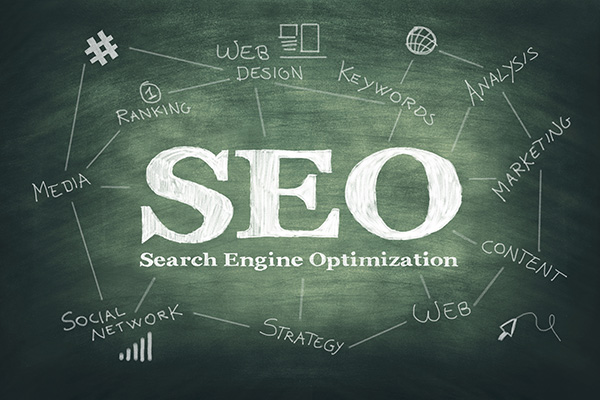Looking for a simplified SEO crash course? Good new., you’ve found it. Let’s dive in!
SEO, or search engine optimization, is the practice of improving the ranking of a website on search engines like Google. It is a crucial part of digital marketing because it helps make websites more visible to potential customers who are searching for the products or services that a business offers.
Why SEO is important: SEO is important because it helps businesses attract more qualified traffic to their websites. When a website ranks highly for relevant keywords, it is more likely to be seen by potential customers who are searching for those keywords. This can lead to more leads, sales, and revenue for the business. Additionally, SEO helps improve the user experience by making it easier for users to find the information they are looking for on a website.
The main topics that will be covered in this SEO crash course include keyword research, on-page optimization, off-page optimization, local SEO, mobile optimization, and tracking and analyzing results.
Keyword Research
- Importance of choosing the right keywords: Choosing the right keywords is an important part of SEO because it helps ensure that a website is targeting the right audience. Keywords should be relevant to the products or services that a business offers, and they should also be popular enough to attract a significant amount of traffic.
- Techniques for finding relevant and popular keywords: There are several techniques for finding relevant and popular keywords, including using keyword research tools like Google’s Keyword Planner, analyzing competitors’ websites and keywords, and looking at search suggestions and related searches on search engines.
- Tips for using keywords effectively in website content and meta tags: Once the right keywords have been identified, it is important to use them effectively in website content and meta tags. This includes using keywords in the title and headings of pages, as well as in the body content. It is also important to use keywords in the meta tags, including the title tag and meta description, as these tags help search engines understand the content of a page and determine its relevance to specific keywords.
On-Page Optimization
- Best practices for title tags and meta descriptions: Title tags and meta descriptions are important on-page elements that help search engines understand the content of a page and determine its relevance to specific keywords or phrases. To optimize these elements, it is important to use relevant and descriptive language, and to include the keywords you’re targeting. The title tag should be concise and catchy, and the meta description should provide a brief overview of the page’s content.
- Tips for optimizing headings, subheadings, and body content: Headings and subheadings are important because they help structure the content of a page and make it easier for users to scan and understand. It is important to use relevant and descriptive headings and subheadings that include the target keywords. The body content should also be optimized by using the target keywords throughout the text in a natural and coherent way.
- Importance of internal linking and how to do it effectively: Internal linking refers to the practice of linking from one page to another on the same website. It is important for SEO because it helps search engines understand the structure and content of a website, and it can also help improve the user experience by making it easier for users to navigate the site. To do it effectively, it is important to use descriptive anchor text that includes the target keywords, and to link to relevant and high-quality pages.
Off-Page Optimization
- Definition of off-page optimization and how it affects SEO: Off-page optimization refers to the practice of improving the ranking of a website by building high-quality backlinks from other websites. Backlinks are links from other websites that point back to a website, and they are extremely important for SEO because they help search engines understand the quality and relevance of a website. When a website has many high-quality backlinks, it can signal to search engines that the website is authoritative and trustworthy, which can help improve its ranking.
- Techniques for building high-quality backlinks: There are several techniques for building high-quality backlinks, including guest blogging, content promotion, and broken link building. Guest blogging involves writing articles for other websites in exchange for a backlink to the business’s website. Content promotion involves promoting a website’s content on social media and other websites in order to attract backlinks. Broken link building involves finding broken links on other websites and offering to replace them with a link to the business’s website.
- Tips for promoting content and getting mentions on social media and other websites: Promoting content and getting mentions on social media and other websites can help build backlinks and improve the visibility of a website. This can be done through social media marketing, email marketing, and influencer outreach. It is important to create high-quality, relevant content that is likely to be shared and linked to, and to use social media and email marketing to promote that content and reach a wider audience. Influencer outreach involves partnering with influential people or organizations in the industry to promote the website’s content and build backlinks.
Local SEO
- Definition of local SEO and its importance for businesses with physical locations: Local SEO refers to the practice of optimizing a website for local search results. It is important for businesses with physical locations, such as stores, restaurants, and service providers, because it helps them attract customers from the local area. When a business’s website ranks highly for local search terms, it is more likely to be seen by potential customers who are searching for the products or services that the business offers in a specific location.
- Tips for optimizing a website for local search results: There are several ways to optimize a website for local search results, including:
- Including the business’s name, address, and phone number (NAP) on the website and in the meta tags
- Creating a Google Business Profile listing and keeping it up-to-date with accurate and complete information
- Including location-specific keywords in the website’s content and meta tags
- Building and managing local citations, which are mentions of the business’s NAP on other websites, such as directories and review sites
- Techniques for building and managing local citations: Building and managing local citations is an important part of local SEO because it helps search engines understand the presence and relevance of a business in a specific location. To build and manage local citations, it is important to create and claim business listings on local directories and review sites, and to make sure that the business’s NAP is consistent and accurate across all listings. It is also important to monitor and manage customer reviews, as these can influence the ranking of a business in local search results.
Mobile Optimization
- Importance of mobile optimization for SEO and user experience: Mobile optimization is the practice of designing and developing a website in a way that makes it easy to use on mobile devices, such as smartphones and tablets. It is important for SEO because more and more people are using mobile devices to access the internet, and search engines like Google are increasingly using mobile-friendliness as a ranking factor. Mobile optimization is also important for user experience because it helps ensure that users can easily access and interact with a website on their mobile devices.
- Techniques for making a website mobile-friendly: There are several techniques for making a website mobile-friendly, including using responsive design, using a mobile-specific website, and using AMP (Accelerated Mobile Pages). Responsive design is a design approach that ensures that a website’s layout and content adjusts to fit the screen size of the device it is being viewed on. A mobile-specific website is a separate version of a website that is designed specifically for mobile devices. AMP is a framework for building fast-loading, mobile-friendly pages.
- Tips for optimizing content and images for mobile devices: In addition to making a website mobile-friendly, it is also important to optimize the content and images for mobile devices. This includes using short, concise text and headings that are easy to read on small screens, and optimizing images by using appropriate file sizes and formats. It is also important to ensure that all links and buttons are easy to tap on mobile devices, and to make sure that the website loads quickly on mobile networks.
Tracking and Analyzing Results
- Importance of tracking and analyzing SEO results: Tracking and analyzing SEO results is important because it helps businesses understand the effectiveness of their SEO efforts and identify areas for improvement. By measuring metrics like traffic, rankings, and conversions, businesses can get a sense of how well their website is performing in terms of attracting and retaining visitors, and how well it is meeting their goals.
- Tools and techniques for measuring the success of SEO efforts: There are several tools and techniques for measuring the success of SEO efforts, including using web analytics tools like Google Analytics, using SEO tracking tools like Ahrefs or SEMrush, and using other metrics like engagement and conversions. Web analytics tools like Google Analytics provide detailed information about website traffic, including the sources of traffic, the pages that are most popular, and the demographics of visitors. SEO tracking tools like Ahrefs and SEMrush provide information about a website’s rankings and backlinks, as well as insights into the performance of competitors. Other metrics, like engagement and conversions, can be tracked through tools like heatmaps and conversion tracking, and can provide valuable insights into how well a website is meeting its goals.
- Tips for using data to improve SEO strategies: By tracking and analyzing SEO results, businesses can identify areas for improvement and adjust their SEO strategies accordingly. This might involve focusing on certain keywords or pages that are underperforming, or implementing new tactics like content marketing or social media marketing to drive more traffic and conversions. It is important to continually monitor and analyze results to ensure that SEO efforts are effective and aligned with business goals.
Wrapping Up An SEO Crash Course
In conclusion, SEO is an important part of digital marketing that helps businesses attract more qualified traffic and leads to their websites and improve the user experience. The main areas of focus for SEO include keyword research, on-page optimization, off-page optimization, local SEO, mobile optimization, and tracking and analyzing results. By following best practices and staying up-to-date on the latest trends, businesses can improve their website’s ranking on search engines and drive more traffic and revenue.
To continue learning about SEO, it is important to stay updated on the latest best practices and trends. This can be done through reading industry blogs and publications, attending conferences and workshops, and participating in online forums and communities. There are also many resources available online, including guides, tutorials, and courses that can help businesses learn more about SEO. By taking the time to educate themselves and stay current, businesses can ensure that their SEO efforts are effective and successful.






